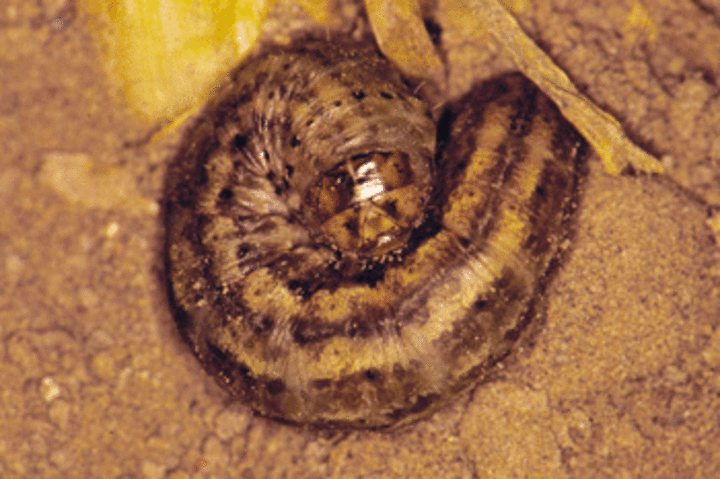April 4, 2008
Slow Wheat And Alfalfa Greenup May Signal Trouble
Many may be thinking that the extended cold, snowy weather this past winter may limit insect problems during the coming year; however, it is important to realize that the winter conditions we experienced were really not that much different than "normal." Many of our regional insect pests are adapted to survive these conditions. This week we received the first reports of significant army cutworm infestations in alfalfa and wheat in the Panhandle.

|
| Figure 2. Army cutworms are brownish-black and can be found in the soil around the crowns of the plants during the daytime. |
Scouting
It is important to scout fields for cutworms as the field starts to green up; if cutworm levels exceed the threshold, a timely treatment can be made. This is particularly important this year in wheat with the potential for high prices. Larvae will be found buried in the soil and debris or under clods in wheat fields.
Treatment Thresholds
Base treatment decisions on the number of cutworms present, the amount of damage that is being caused, and the plant's ability to outgrow any damage. If plants are able to green up and continue growing well, the impact of cutworm feeding will be minimized, but if plants are otherwise stressed, the impact will increase. In poorly growing wheat or alfalfa, two or more cutworms per square foot may warrant treatment, but in healthy wheat or alfalfa, four or more per square foot would be the threshold. This year in wheat, however, reducing the threshold may be warranted because of the increased crop value.
Cutworm Management
Emergency control of cutworms in wheat and alfalfa is best accomplished with the use of one of the various pyrethroid insecticides labeled for that crop.
Resources
More information on the army cutworm is available in the NebGuide Management of the Army Cutworm and Pale Western Cutworm (G1145).
Gary L. Hein
Extension Entomologist
Panhandle REC, Scottsbluff
